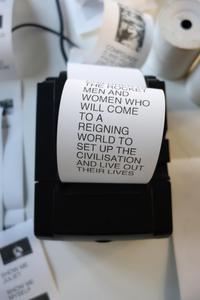Individual Project
As part of collective Hackers & Designers Anja Groten is invited to present the 'Momentary Zine' during the Neuhaus program at Het Nieuwe Instituut.
Starting in the Spring of 2019, exactly 100 years after the foundation of Bauhaus, Het Nieuwe Instituut transforms into Neuhaus, a temporary transdisciplinary academy for more-than-human knowledge. For a period of four months, this ever-evolving learning environment takes over the institution, occupying and transforming its existing building and facilities, adding new ones, and opening them up - to co-create, co-own, share, and perform the Neuhaus programme of more-than-human knowledge.
NEUHAUS is a collective of human and non-human subjects
NEUHAUS is a spatial entity
NEUHAUS is a learning environment
NEUHAUS is an inclusive place
NEUHAUS is an environment that learns
NEUHAUS challenges perception, testing unexpected ways of accessing knowledge
NEUHAUS speaks non-verbal metaphors
NEUHAUS produces other knowledge in the age of reset
Neulab is an educational space or ‘making space’ where Neuhäusler of all ages can make, work with and investigate more-than-human knowledge.
About Neulab
In the Neulab, young artists and designers can themselves carry out research and develop projects around more-than-human knowledge. In addition, they can welcome other Neuhäusler, and involve them in their creative process. Topics for research could include: how can we work together with algae? Can we learn to speak chemical languages? How can virtual reality lead to greater empathy? The aim is to learn to see and design the world anew using cross-disciplinary, interdisciplinary and transdisciplinary tools and instruments.
Come experiment with possibilities of co-producing a publication instantly – utilising an interactive publishing tool with our momentary zine. How does it work? You speak. It prints! With the help of speech to text technology the tool translates spoken word to text. Simultaneously an algorithm runs an automated image search, querying the spoken words and adding the images accordingly. The outcome: A printed publication.
The immediacy of the voice as the main content generator and the possibility of starting a dialogue with the technology serve as vehicle for participation – enabling conversations about unusual publishing methods and the (im)possibilities of automation processes.
